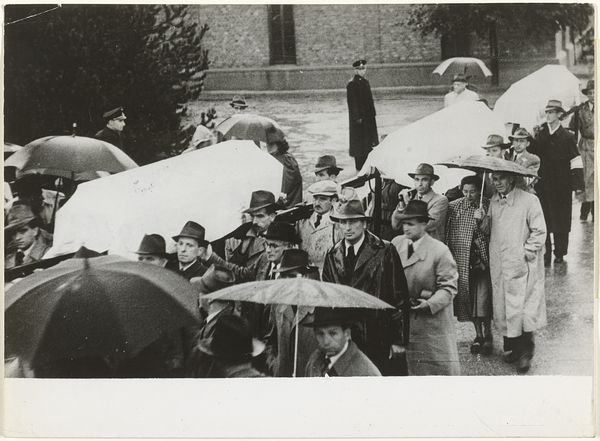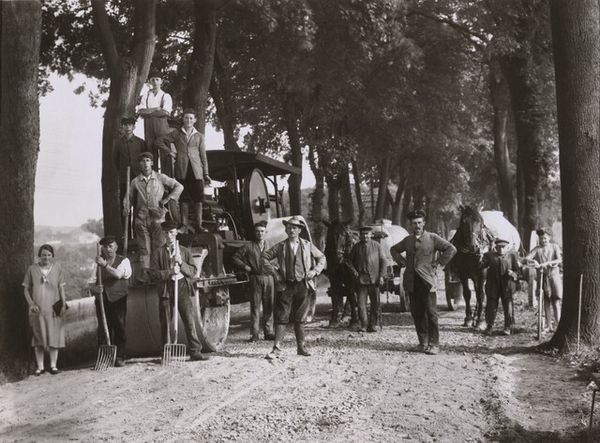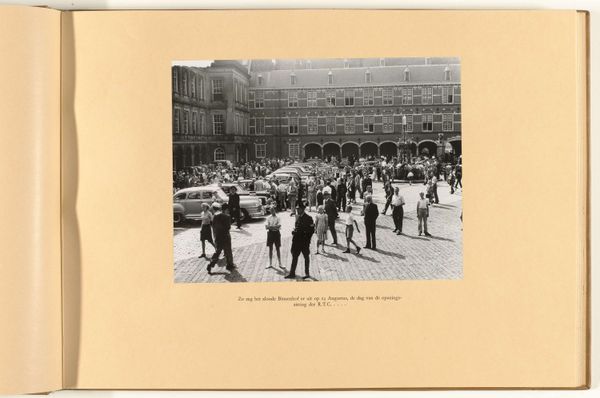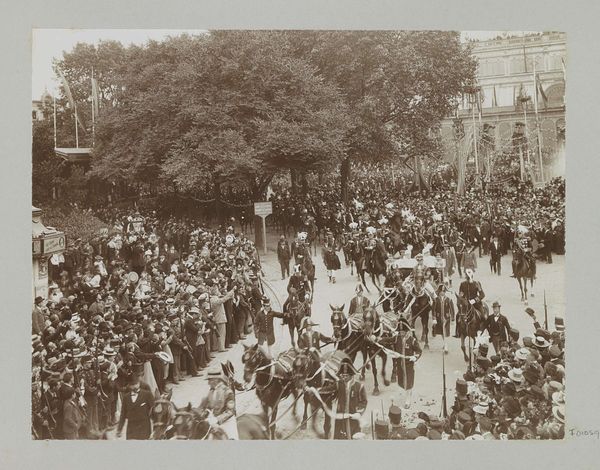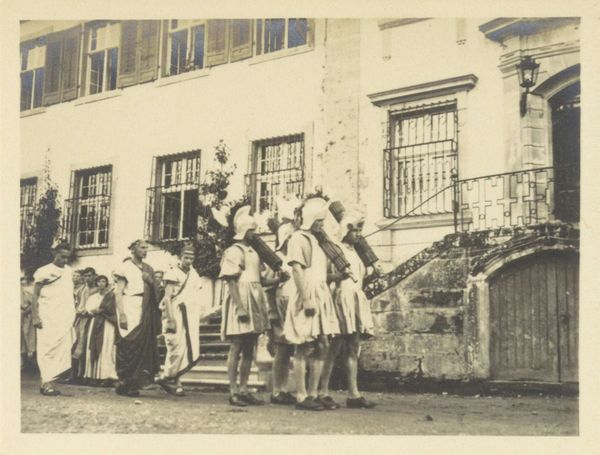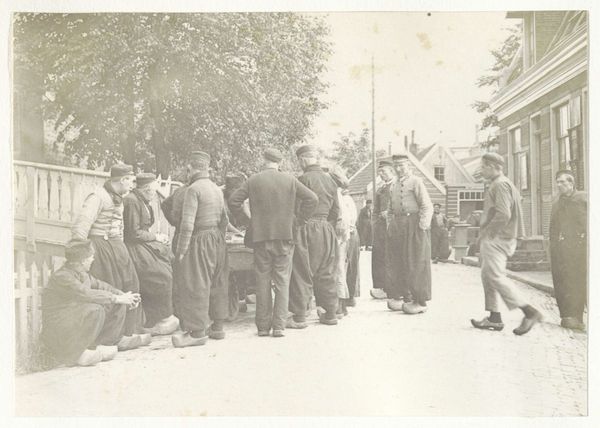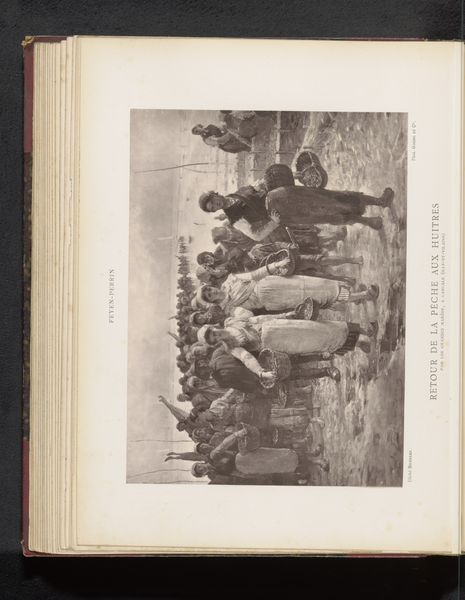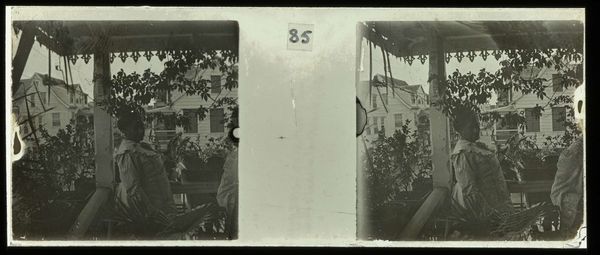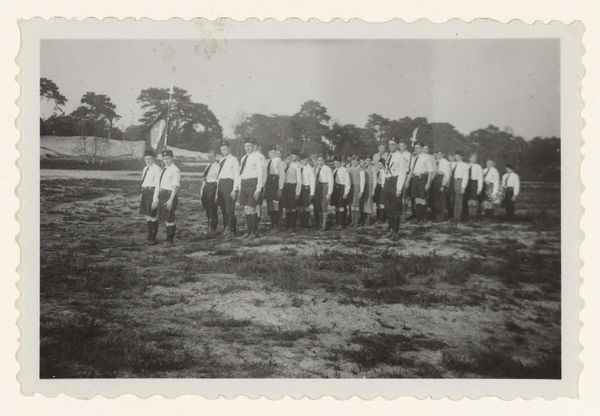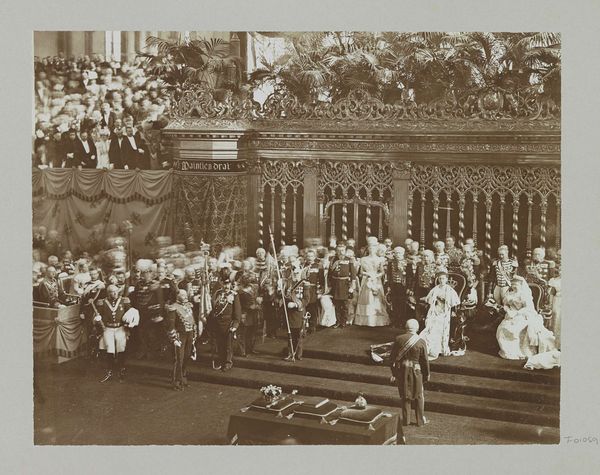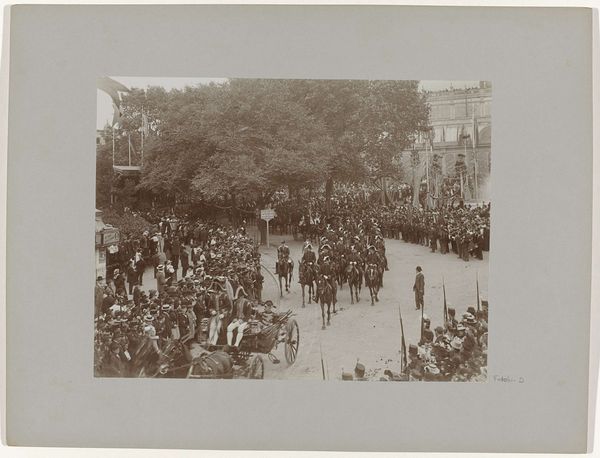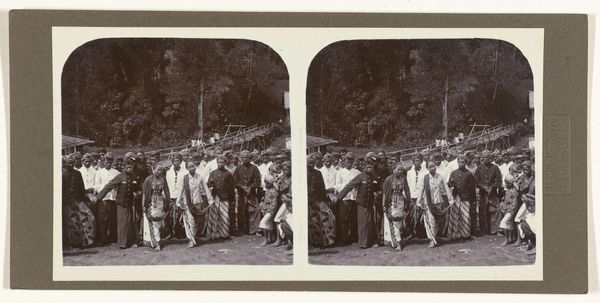
photography, gelatin-silver-print
#
photography
#
group-portraits
#
gelatin-silver-print
#
genre-painting
Dimensions: height 167 mm, width 236 mm
Copyright: Rijks Museum: Open Domain
Curator: Here we have an arresting gelatin-silver print from around 1929, titled "Leerlingen van Schule Schloss Salem tijdens een dramatische uitvoering"—or, "Students of Salem Castle School during a dramatic performance." Editor: Wow, okay, my first impression? Slightly unsettling! The washed-out tones, the vaguely militaristic attire, and the swords… there’s a strange formality clashing with something almost sinister. Curator: Exactly! The image shows a group of young men, likely students, dressed in what seems like a theatrical costume. Swords and tunics evoke a historical or perhaps mythic drama being staged. Think of the performance of power and coming-of-age rituals associated with sword imagery. Editor: I get a whiff of youthful zealotry here—perhaps they're re-enacting a patriotic moment from German history? I can imagine these chaps earnestly intoning heroic pronouncements with those prop swords! Curator: It’s a little more complex. Schule Schloss Salem was known for its progressive educational ideals, emphasizing character-building and outdoor activities, however, post-WWI there were also underlying undertones. The visible uniformity, use of swords… it plays into deeply-rooted archetypes of nationhood, belonging, and performance of collective identity. It’s potent. Editor: That tension—between supposed "progressive" ideals and this very stiff, almost forced presentation of unified action—really speaks to the era, doesn’t it? Like a tightly wound spring ready to snap. Makes you wonder what sort of "drama" they were actually performing. Curator: Precisely! And the genre-painting style adopted in the photography heightens the narrative possibilities. It makes us ponder the stories being visually encoded and projected in Germany in those tumultuous years. It also begs the questions, what did it mean to these young students who became men, as history unfolded? Editor: Looking at this print now, almost a century later, one wonders, in retrospect, how conscious were they of the deeper currents they were swimming in? It feels like such a telling, and slightly haunting, glimpse into the past. Curator: Indeed. A complex snapshot that makes us think critically about how we inherit, display and question images connected with power, history, and collective narratives.
Comments
No comments
Be the first to comment and join the conversation on the ultimate creative platform.
